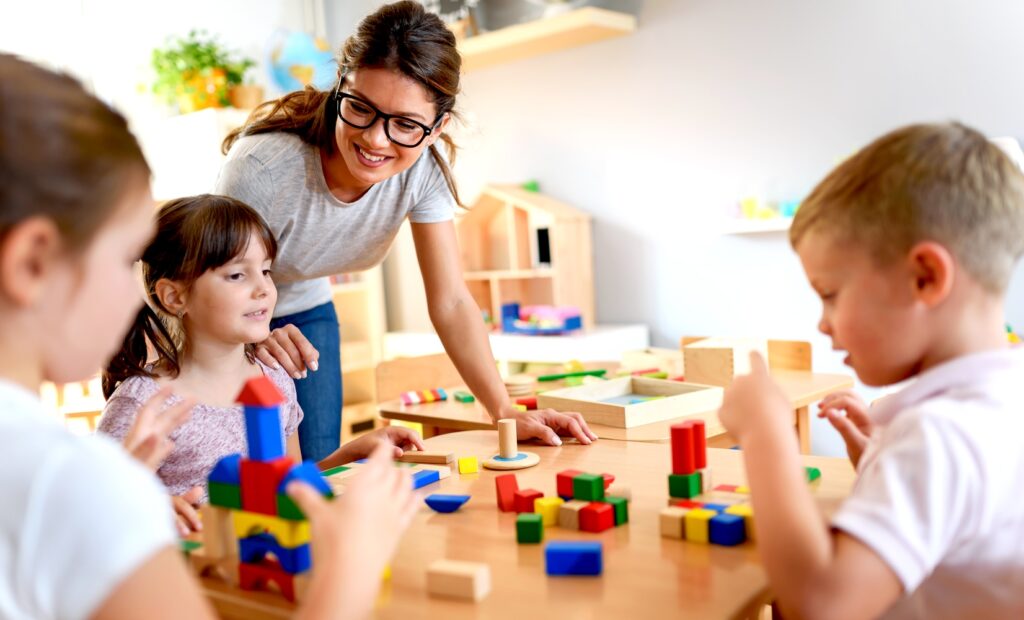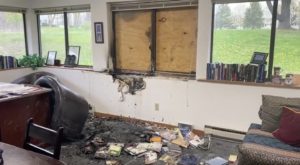Op-ed: Early childhood educational model thrives in Idaho despite lack of government support
Many advocates of early childhood learning assume they need government help to achieve all their goals and dreams.
However, a left-of-center educational magazine is discovering parents, not…

Many advocates of early childhood learning assume they need government help to achieve all their goals and dreams.
However, a left-of-center educational magazine is discovering parents, not government, can already figure out how to educate their young children on their own.
“Early learning advocates across the state have organized a patchwork of local programs that simultaneously solve the problems communities are facing right now while also generating support for future endeavors,” journalist Emily Tate Sullivan noted in a recent article. “Other red states have adopted the collaborative model, but Idaho’s approach is unique in that it lacks funding from the state.”
A closer look at these learning collaboratives shows key insights into what they’re doing right, as opposed to what government programs often assume are right.
Hyper-local initiatives – ‘community spirit’
The story starts in 2018 when Beth Oppenheimer decided to bring her childhood educational initiatives directly to families, “with or without backing from state leaders.”
Oppenheimer’s ideas “were not making progress persuading lawmakers at the statehouse,” but her involvement in the community gave her awareness into the problems legislators couldn’t see, according to the report.
“Children were struggling, showing up to kindergarten having missed all sorts of academic and developmental milestones and expected to somehow catch up,” Sullivan wrote. “Low-income families, meanwhile, were being crushed by the cost of care and the lack of high-quality options.”
So Oppenheimer sought help from the W.K. Kellogg Foundation to fund early learning collaboratives through her nonprofit advocacy group, the Idaho Association for the Education of Young Children.
“Those programs would bring together local leaders in the education, business and nonprofit sectors, as well as parents and community members, to ask: What problem are we trying to solve in early childhood, right here where we live?” Sullivan wrote.
The magazine notes the program’s growth from 10 to 25 collaboratives in just five years, especially in “deep-red, rural communities.”
Tennille Call, interim director of education at the United Way of Southeastern Idaho, explains the solution to appealing to all parties across the political spectrum – “local control” instead of a federal or state mandate.
“Here, the community can get behind it because it’s a community thing,” she said. “Community spirit trumps anyone’s political agenda.”
In today’s hyper-partisan and bitterly divided society, can’t we all agree on bringing more of that into something as important as early childhood education?
Unfortunately the government’s recent actions hinder, and sometimes actively undermine, community spirit by pitting parents against schools in what seems like an extended custody battle.
Examples include likening parents to ‘domestic terrorists’ and encouraging schools to implement policies that hide information from parents, such as students’ preferred pronouns or changing gender identities.
Eschewing a one-size-fits-all approach
Idaho’s approach also allows families to customize each program to their communities, rather than forcing communities into pre-existing programs.
“Inherent in the model is an understanding that a one-size-fits-all approach won’t work in a state as geographically, politically, religiously and culturally diverse as Idaho,” Sullivan wrote.
For one town, that means including more fathers in their children’s upbringing.
“In American Falls, families have become more involved in their children’s learning and development,” Sullivan wrote. “That includes dads, who proponents say are noticeably more engaged in raising their kids than fathers in the region used to be.”
Ever since the collaborative’s launch in American Falls, children’s early literacy rates have enjoyed consistent growth, the report found.
“Our communities are so different. It’s hard for individuals in Boise to truly understand what’s going on in North Idaho,” said Cathy Kowalski, owner and director of an early learning program in Post Falls. “That’s what I love about the early learning collaboratives — we’re bringing it back to local.”
Educational experts have noticed that same spirit of grass-roots innovation in homeschooling, which could be considered the ultimate customizable learning model.
The results of that approach are readily apparent when children are in high school and beyond. Homeschool students tend to outperform their public-school counterparts by 15-30 percentage points on their ACTs and SATs, “notwithstanding the parents’ income and education.”
They also have a higher average college graduation rate of 67% compared to the public-school graduation rate of 59%.
Unfortunately, government preschool programs tend to be anything but customizable. They often push academics too hard and too fast on young children who aren’t mentally or socially developed enough to endure that pressure.
One longitudinal study concluded these programs can lead to long-term harm in outcomes of measurably lower academic performance, increased diagnoses of learning disorders, and higher rates of school rule violations.
“Four-year-olds need lots of time to play, create, socialize, take initiative, figure things out on their own, and learn to manage themselves,” said Dr. Peter Gray, research professor at Boston College.
“The time spent in academic training is time that they cannot spend on learning the much more important skills that come from self-directed activities.”
Expanding childcare options for working parents
Quality childcare is a necessity for many working parents in Idaho, yet it’s also extremely expensive.
“More than half of children under age 6 require some sort of care arrangement because their parents work,” Sullivan wrote. “An estimated 28 percent of families need childcare but can’t access it, a gap that prevents some parents from working and bolstering the economic well-being of their families.”
Leaders of the early learning collaboratives recognized this need and sought their communities for help.
Who answered? Ironically enough, not the government, but local, innovative, family-friendly businesses.
“In American Falls, a number of businesses have sponsored the community’s early learning programming,” Sullivan wrote. “A car dealership in town covered the costs of a family game night once, and a local hospital provided materials for another family engagement event.”
These companies aren’t limited to small businesses, but include major players like Lamb Weston, which operates a potato processing plant in the town.
“Businesses like to fund things in their backyard, especially in rural Idaho,” Oppenheimer said.
As companies help sponsor childcare scholarships and other benefits for the community, this pays off in more than just goodwill from working parents.
“They’ve noticed that employees aren’t calling out sick as often because they have childcare,” Oppenheimer said. “They have more people that are going to work every day that want to work. Their employee base in American Falls has been consistent and thriving.”
With all these advantages, even liberals who champion government funding as a panacea for every problem are forced to admit it isn’t always required.
“Local, homegrown efforts can be an avenue for building early care and education infrastructure,” Sullivan noted, “despite a dearth of government support.”
Indeed.
Perhaps the government could learn from these local, homegrown efforts to improve childcare instead of trying to force through problematic legislation that raises serious concerns for faith-based child care providers and religious freedom advocates.
Instead, government should support and empower those who typically have the most self-interest and drive to provide the best education possible to all children – their parents.



